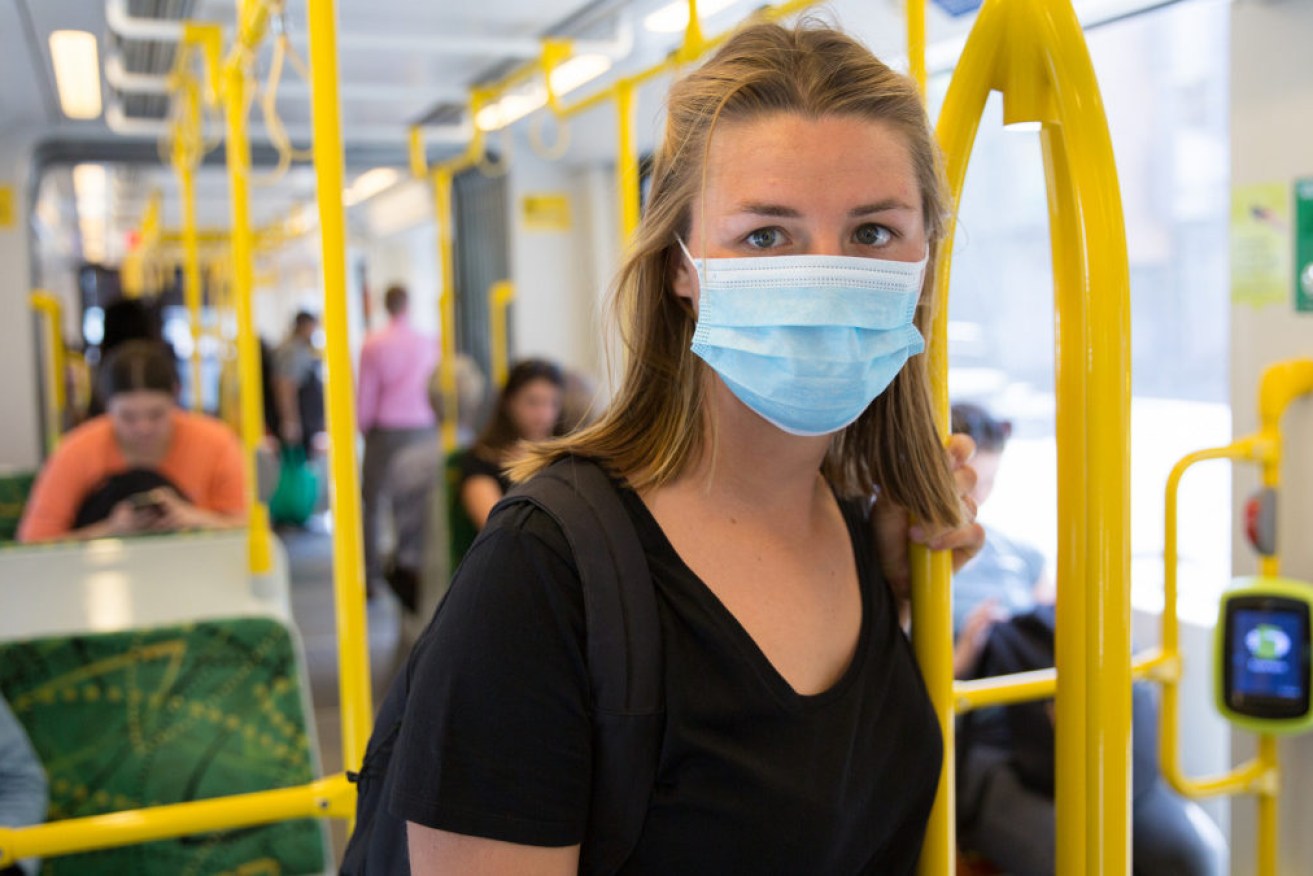Masks off, dancing on as Victoria winds back virus rules


Victorians are being urged to return to the office, but masks on public transport are here to stay. Photo: Getty
It’s masks off for many Victorians and a return to the dance floor, as virus rules are further wound back after the state’s most recent lockdown.
With the state notching a full week without community transmission of COVID on Wednesday, state Health Minister Martin Foley confirmed restrictions would relax as planned.
“The past few weeks have shown us, all Australians, just how delicate and hard-fought the gains that we’ve made as a community are when it comes to beating the coronavirus,” he said.
“Around 12 million Australians in four states and territories have been subject to lockdowns, particularly in response to the fast-moving Delta variant of concern. And that Delta variant of concern has made its way out of hotel quarantine and into communities right around the country.”
From midnight Thursday, across Victoria, masks will no longer be compulsory for those who work in offices or factories, unless in customer-facing roles. School students and staff will also no longer be required to wear masks.
“I am sure that we will see more people as a result come back to our offices, which will in turn assist our retail, our hospitality and our business districts to continue their recovery,” Mr Foley said.
Business groups have lobbied for masks to be dropped and the 75 per cent cap on office workers to be scrapped, saying it would encourage more workers to return to the Melbourne CBD.
Masks will remain mandatory in many indoor settings, including shopping centres and public transport.
Also from midnight Thursday, density limits will relax to one person every two metres, and there will be no customer caps for hospitality venues and gyms.
Dance floors will also return, with caps of 50 revellers – and COVID marshals will be required to keep count.
Crowds will also increase at sports events, with up to 75 per cent capacity at indoor and outdoor stadiums.
Caps on private gatherings remain at 15.
“I think Victorians need look no further than the outbreaks across our borders to know and appreciate the risks that continue to attend coronavirus spreading through indoor domestic settings,” Mr Foley said.
The changes will apply until at least July 22.
Mr Foley said caution was still needed, and took another swipe at the troubled COVID vaccine program.
“With the slower-than-forecasted rollout of the Commonwealth vaccination program and the reduction in travel caps yet to take effect from the national cabinet decision and the outbreaks in interstate jurisdictions to our north … our public health experts have urged us and recommended that we continue to act carefully and cautiously as we move out of those restrictions,” he said.
Associate Professor Deb Friedman, from the Victorian public health team, said the changes reflected the state’s achievements in overcoming its recent outbreaks but also the risks from outbreaks elsewhere in Australia.
“One infectious case going undetected in the community for a few days is something that we really don’t want to contemplate currently,” she said.
Victorians are still advised not to travel to hotspots declared orange or red zones under its travel permit system. They include:
- Greater Sydney, including the Blue Mountains, the Central Coast, Shellharbour and Wollongong (red)
- The remainder of NSW, including the ACT (orange)
- Brisbane, Moreton Bay and the Sunshine Coast (red)
- Townsville, Magnetic Island, Palm Island and the local government areas of Ipswich, Logan, Redlands, Gold Coast, Lockyer Valley, Noosa, Scenic Rim and Somerset (orange)
- Western Australia’s Perth and Peel regions in Western Australia (orange)
- Darwin and Alice Springs (orange)
More than 9000 people have returned to Victoria from red zones since June, and more than 65,000 from orange zones.
Earlier, Victorian authorities threatened to shut the border to red zone returnees if they continued to go walkabout.
Of 365 home compliance checks conducted on Tuesday, four Victorians who had travelled from interstate hotspots were not isolating as required.
That followed a similar incident with three returnees unable to be found on Monday. The state’s COVID-19 commander Jeroen Weimar said it was “hugely frustrating”.
“We need you to isolate for those 14 days and to work with us to keep the rest of the community safe,” he said on Tuesday.
“Because otherwise we won’t have any choice but to not allow people to come back home, and that’s the last thing we want to do.”








